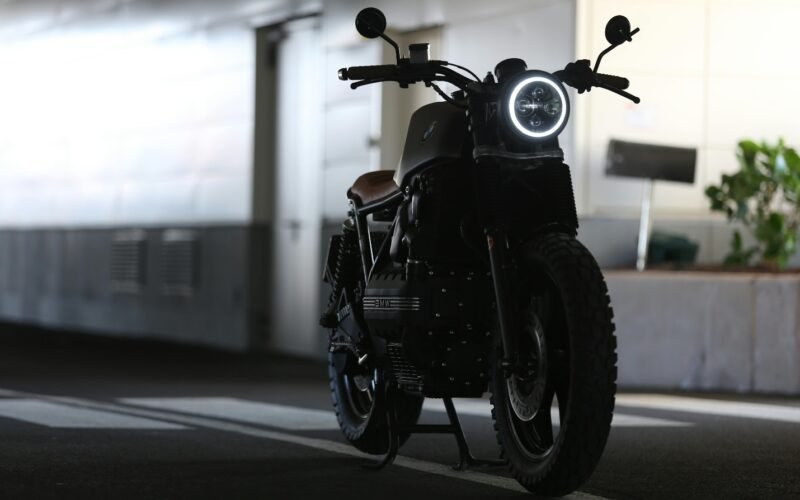It takes cautious procedures, simple equipment and careful preparation to move a motorbike without causing harm. Paint, components, and tires are better protected when the bike and the transit area are prepared. The foundation for a safe relocation is laid down by simple tasks like collecting the appropriate straps, cleaning surfaces, and checking tire pressure. In addition to saving time, knowing how to lift, secure and stabilize a motorcycle helps avoid dents or scratches. Reliable equipment and well-defined procedures provide seamless operation that keeps the bike prepared for the next journey.
1. Secure Straps and Anchor Points
Robust tie down straps secures a motorbike to the transport truck and stop it from slipping or wobbling. By preventing metal to metal contact, straps with soft loops at the ends assist preserve paint and chrome finishes. Solid connection points that withstand abrupt movements are provided via anchor points on the bike frame, handlebars, and footpegs. Equivalently tensioning the straps on each side keeps the bike upright and prevents leaning. Operators can tighten straps with ratchet straps that have smooth adjustment preventing jerks that could break or loosen them. Soft loop protectors around the frame guard against strap abrasion. Checking strap tension before every move ensures the load stays stable. Secure anchor points and quality straps give a locked connection that keeps the motorcycle steady on bumpy roads or during quick turns.
2. Use Smooth Loading Ramps
A stable ramp supports a safe, controlled loading process that shields wheels and forks from damage. Ramps with textured surfaces grant reliable traction for tires. Wide, straight ramps align the bike’s path without forcing the handlebars off‑center. Ramps that fold or extend easily store in a vehicle trunk when not in use. Securing the ramp to the tailgate or loading edge with hooks or straps prevents slipping under load. A single‑piece design reduces wobbling and holds weight evenly across the slope. Gentle incline angles lower stress on the front forks and chain. Pallet style ramps with side rails can stop tires from slipping off the edge. Proper ramp use keeps balance during loading and unloading and helps protect paint and body panels from hits.
3. Protect Surfaces and Parts
Covering vulnerable parts with soft padding or cloth shields paint, mirrors, and lights from scratches. Foam pipe insulation sleeves slip around the frame tubes and pinch points to keep straps from cutting into metal. Microfiber towels under straps stop abrasion on the fuel tank and fairings. Small pieces of foam block under the handlebars cushion the impact from sudden stops. Removing loose accessories such as saddlebags or mirrors prevents breakage in tight spaces. Covering the seat with a clean cloth stops zipper marks and scuffs. Applying light film tape to high‑contact areas guards against strap slips. Regular cleaning before a move removes grit that can rub into finishes. Protective covers let the bike travel without paint chips or surface dents.
4. Choose the Right Transport Equipment
Selecting a sturdy wheel chock or motorcycle dolly gives a solid base for any motorcycle transport. Wheel chocks that bolt or strap to the trailer floor hold the front tire in a locked position and stop forward or backward movement. A dolly with rotating wheels lets the front end turn slightly to follow transport motions without stressing the forks. Lightweight aluminum designs give strength without adding excess weight. Quick‑release pins speed setup and removal for fast loading. Non‑skid bases under chocks or dollies grip the trailer bed to prevent slides during braking or acceleration. Rolling the motorcycle into the chock until it clicks into place ensures a snug hold. This equipment grants reliable support and lowers the risk of frame bends or wheel misalignment when moving over uneven terrain.
5. Balance Weight and Positioning
Centering weight over the transport vehicle axle keeps the motorcycle stable and reduces sway. Positioning the bike’s center of gravity close to the trailer or truck bed midpoint helps control corners and braking. A slight forward lean into a secured chock shifts the load toward the vehicle, preventing backward tilt. Even side‑to‑side strap tension stops the bike from leaning or twisting. Shifting heavier accessories such as luggage to low, central mount points lowers torque on tie‑down straps. Checking the balance before departure by gently pushing the bike side to side verifies secure anchoring. Adjusting strap angles so they pull slightly downward adds stability by tightening under load. Proper weight distribution provides comfortable handling on highways and in cities and can safeguard forks, shocks and swingarms.
Conclusion
Relocating a motorcycle without causing any damage depends on powerful straps, stable ramps, cushioning material, appropriate tools and careful attempts. Each tip helps keep paint, parts, and wheels safe during transport. Simple gear checks, careful setup, and balanced anchoring support a smooth journey. Clear preparation and reliable tools make every move secure and stress‑free. Continuous attention to protection details makes transporting a motorcycle safe and straightforward.






